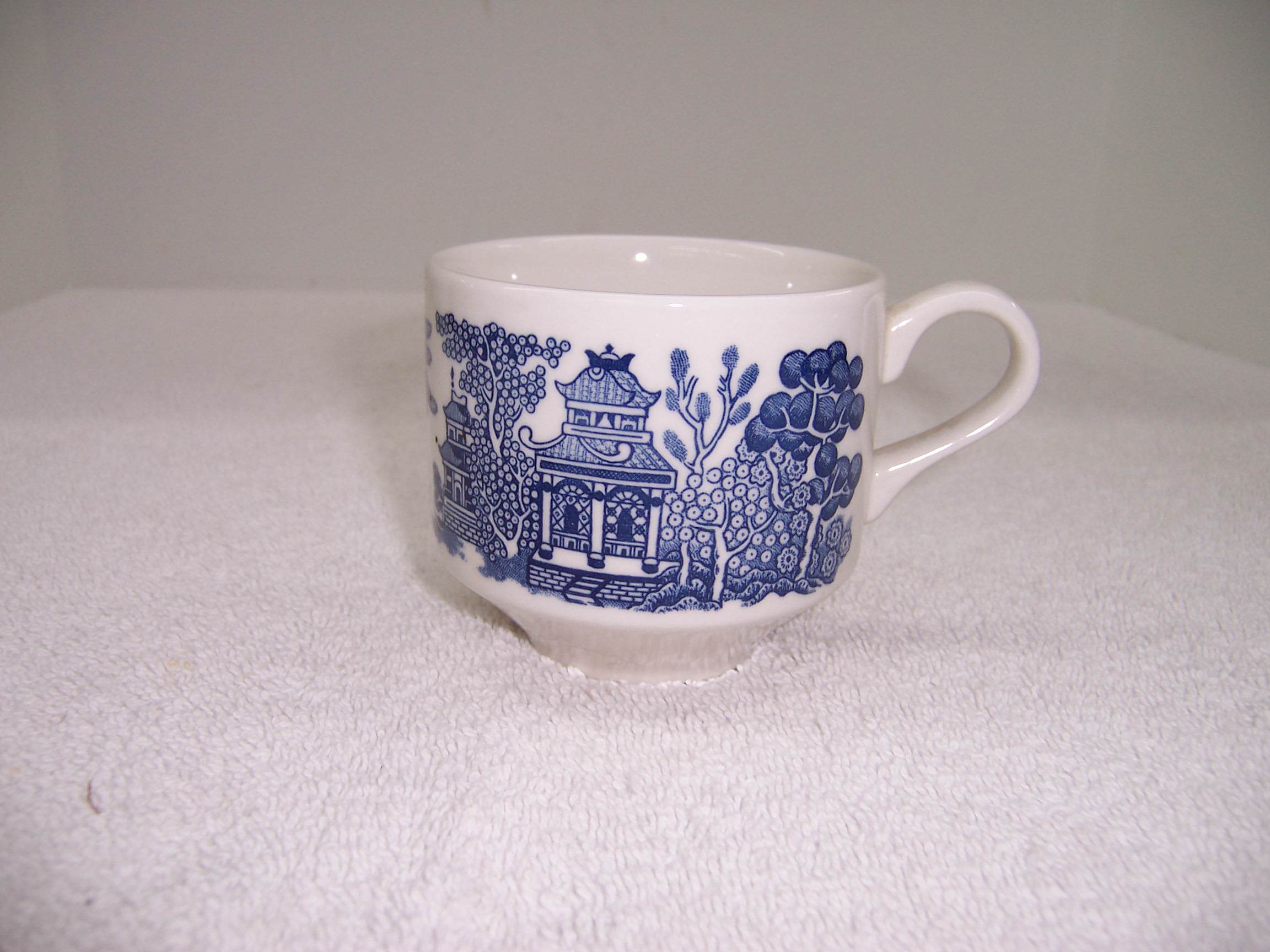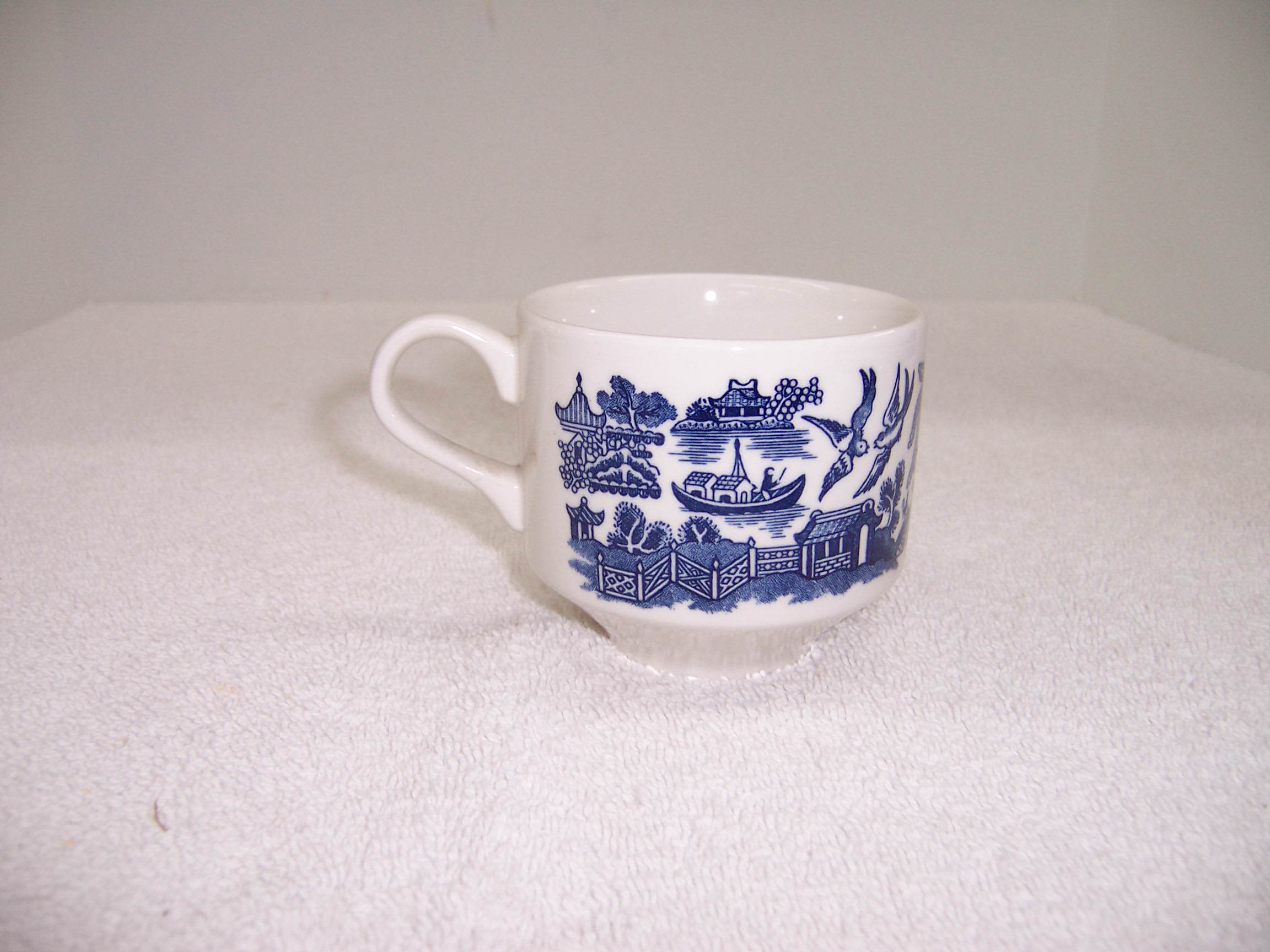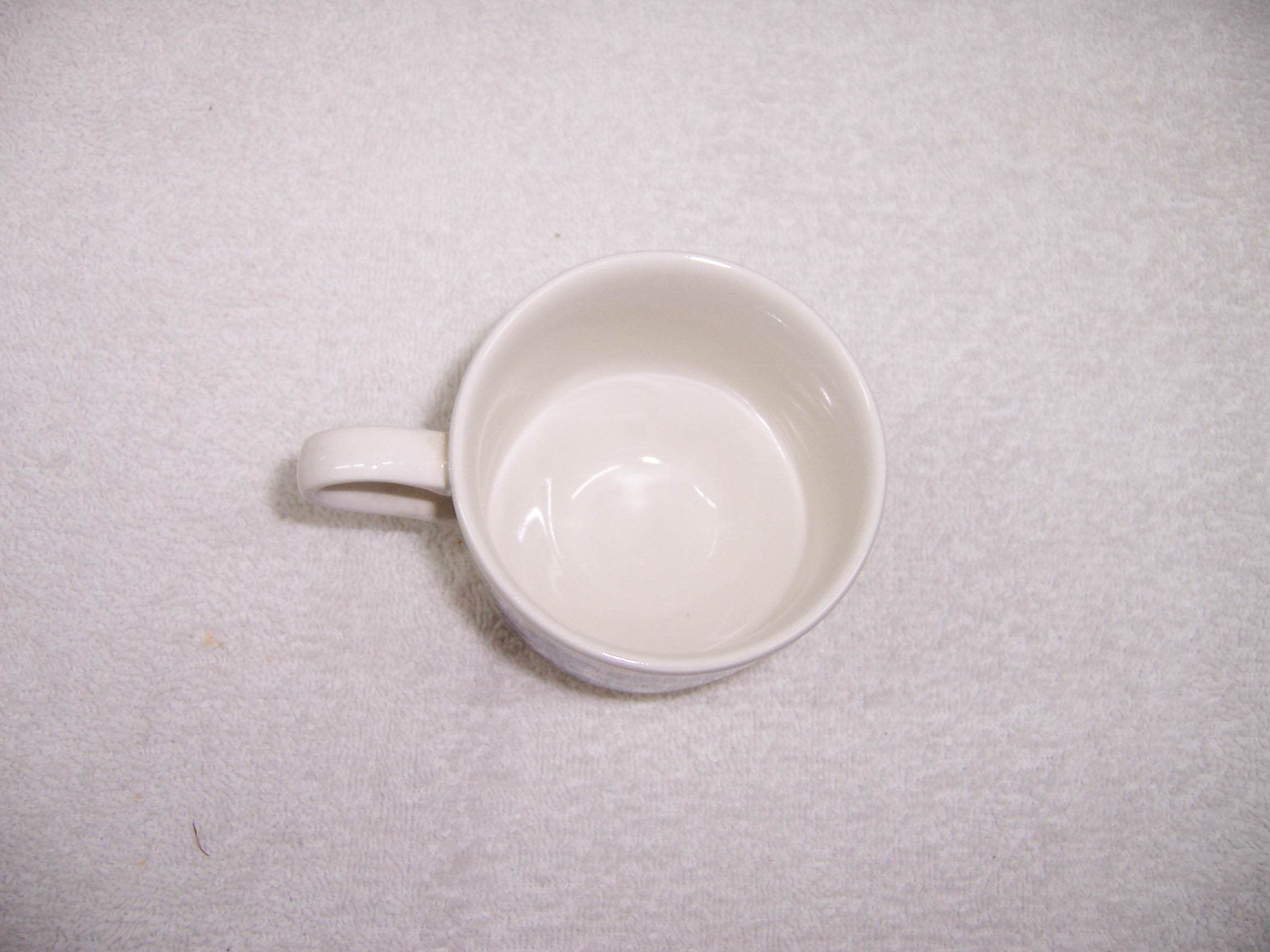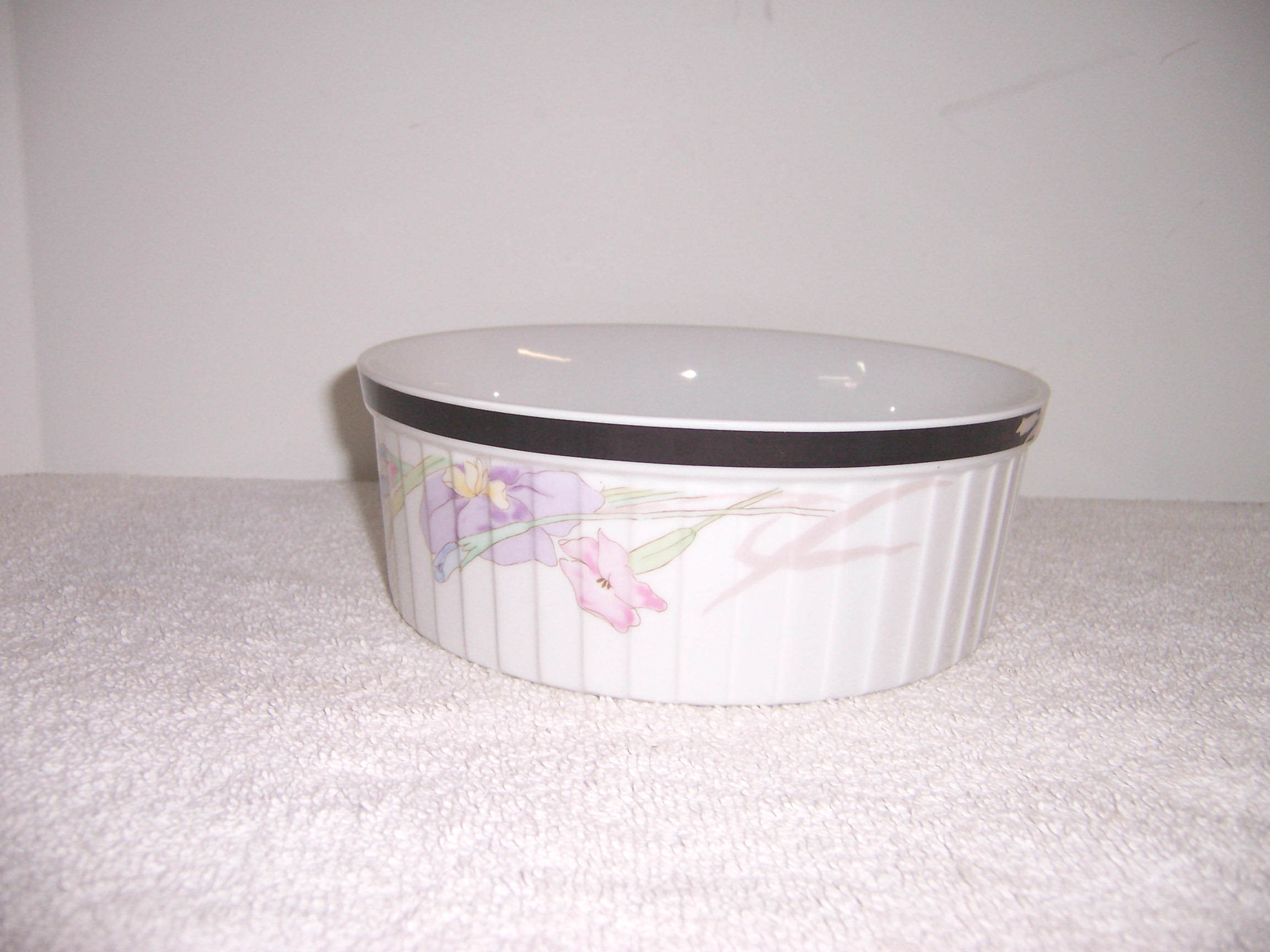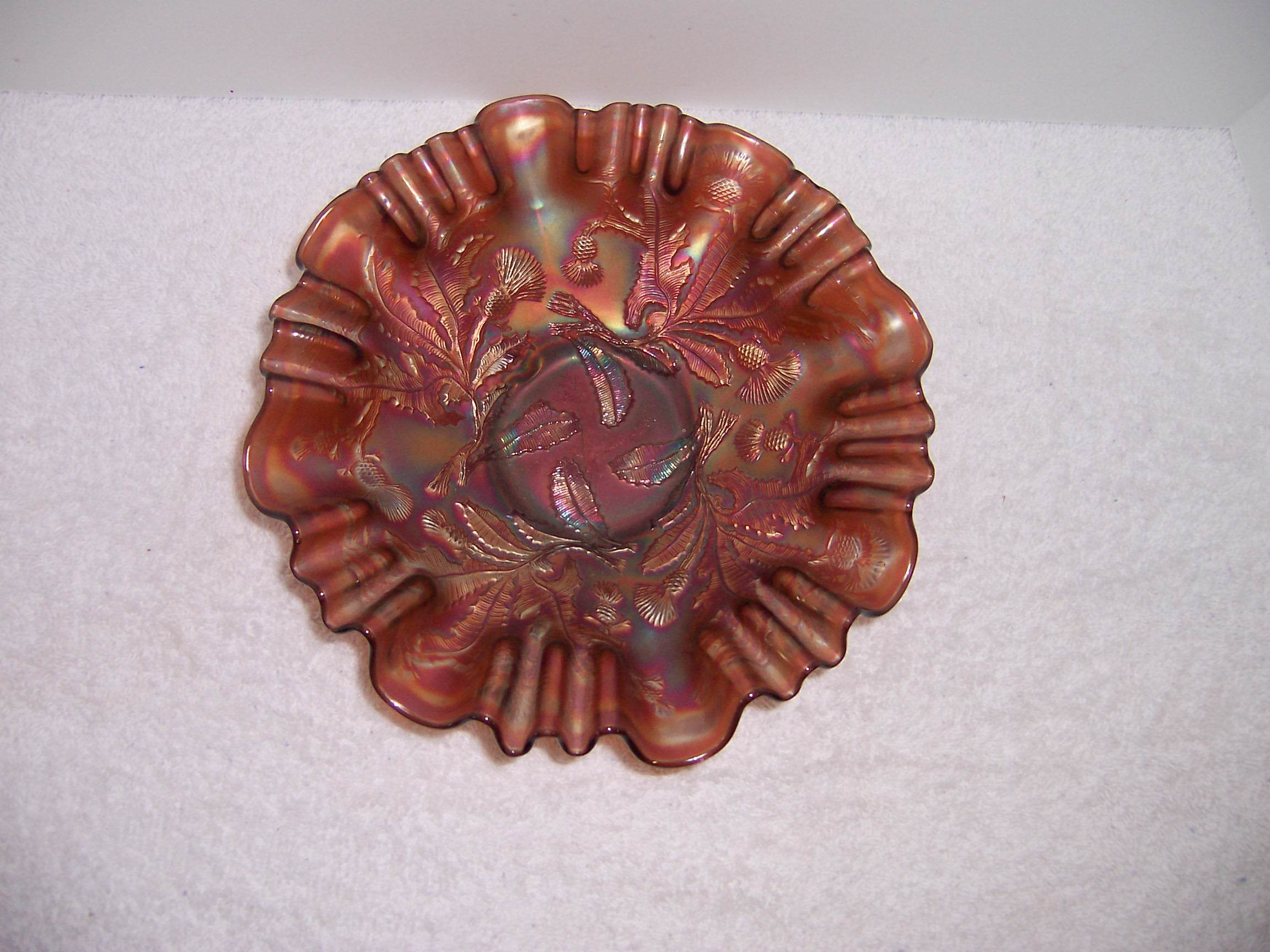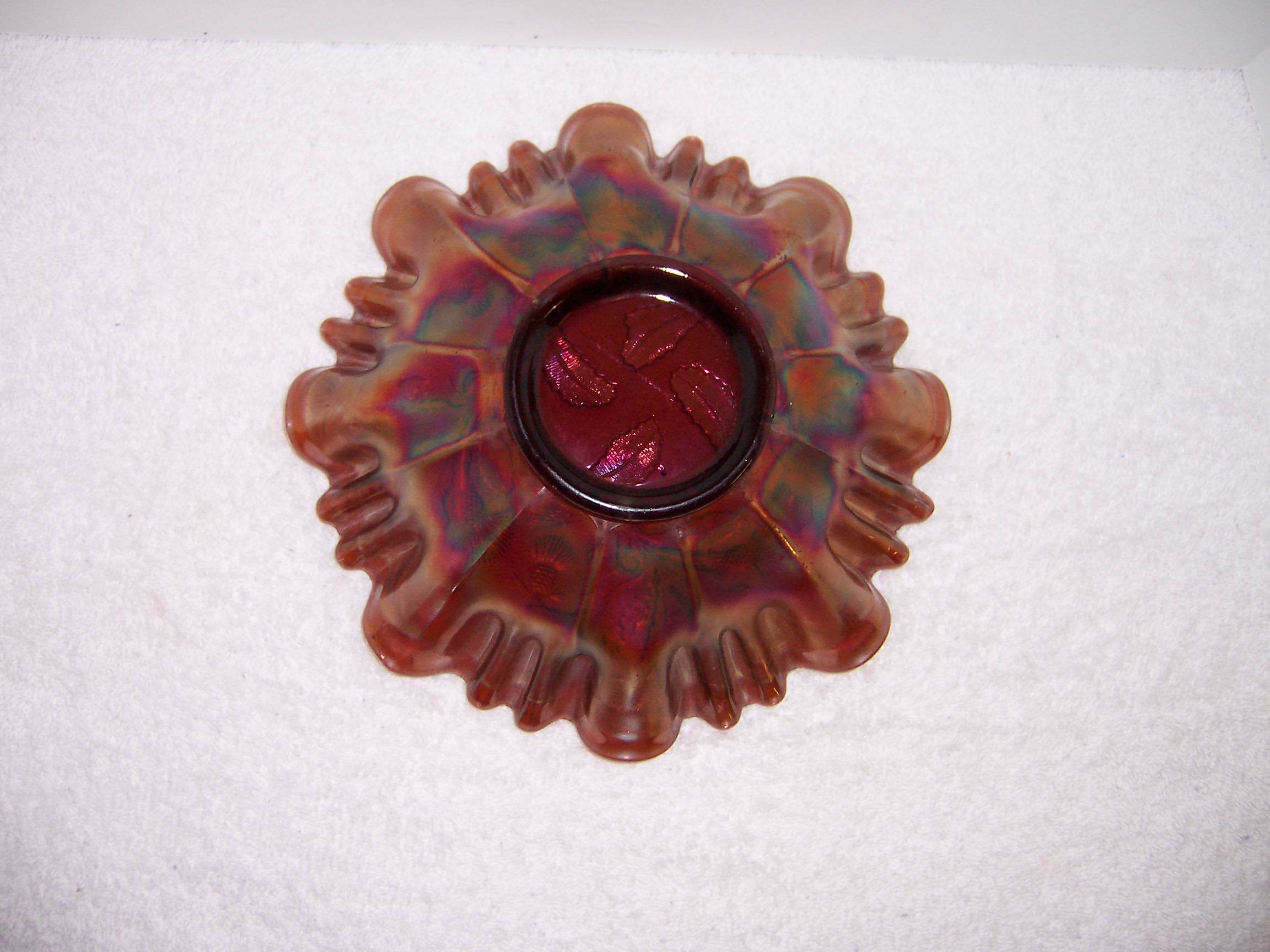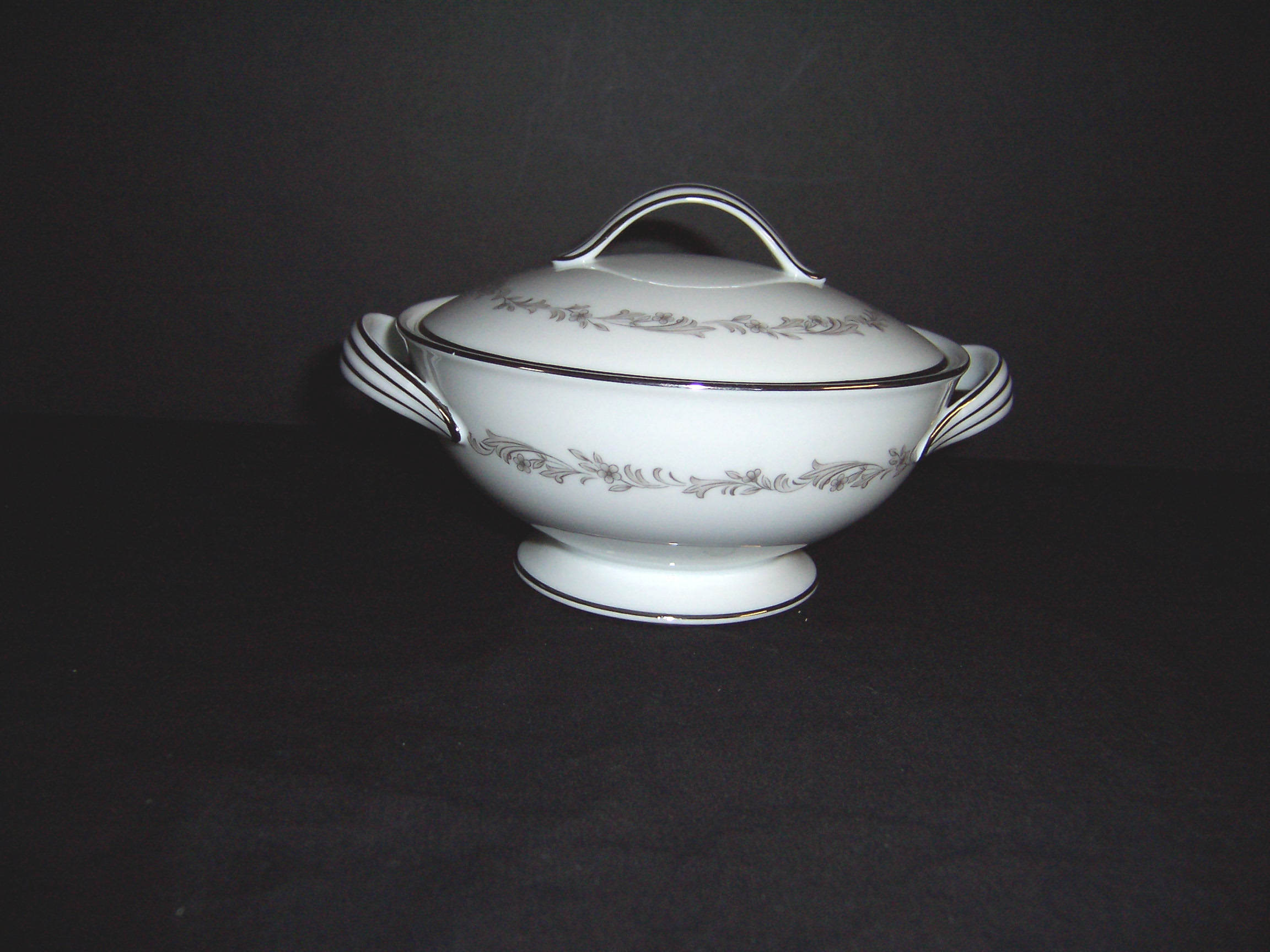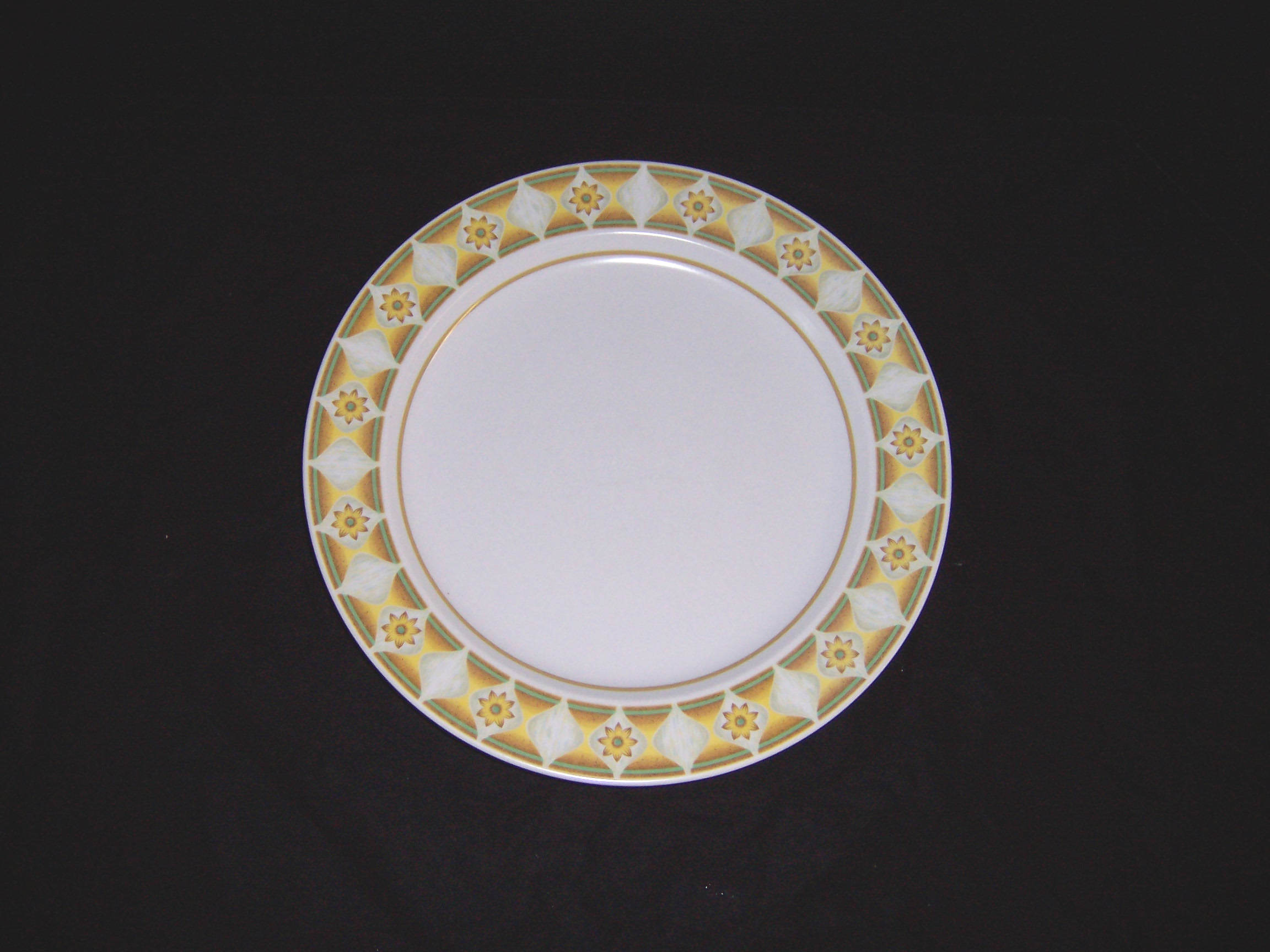Description
2 Churchill Willow Blue Flat Cups in great condition. It measures 2 7/8″ x 3 1/8″ diameter.
The Willow pattern plate is a distinctive and elaborate pattern used on ceramic kitchen/housewares. The willow pattern was popular in 18th century England, e.g., porcelain designed by Thomas Minton around 1790 and has been in use for over 200 years. The design was inspired by the china England imported from China during the late 18th century. Other references give alternative origins, such as Thomas Turner of Caughley porcelain, with a design date of 1780. Willow refers to the pattern, a specific treatment, either applied transfer, or stamp, known as transferware. Background colour is always white, while foreground colour depends on the maker; blue the most common, followed by pink, green, and brown. Assortment, shape and dates of production vary.
Contents [hide]
1 Legend behind the pattern
2 In popular culture
3 References
4 External links
Legend behind the pattern[edit]
In order to promote sales of Minton’s Willow pattern, various stories were invented based on the elements of the design. The most famous story usually runs as described below. The story is English in origin, and has no links to China.[1]
The Romantic Fable: Once there was a wealthy Mandarin, who had a beautiful daughter (Koong-se). She had fallen in love with her father’s humble accounting assistant (Chang), angering her father. (It was inappropriate for them to marry due to their difference in social class.) He dismissed the young man and built a high fence around his house to keep the lovers apart. The Mandarin was planning for his daughter to marry a powerful Duke. The Duke arrived by boat to claim his bride, bearing a box of jewels as a gift. The wedding was to take place on the day the blossom fell from the willow tree.
On the eve of the daughter’s wedding to the Duke, the young accountant, disguised as a servant, slipped into the palace unnoticed. As the lovers escaped with the jewels, the alarm was raised. They ran over a bridge, chased by the Mandarin, whip in hand. They eventually escaped on the Duke’s ship to the safety of a secluded island, where they lived happily for years. But one day, the Duke learned of their refuge. Hungry for revenge, he sent soldiers, who captured the lovers and put them to death. The gods, moved by their plight, transformed the lovers into a pair of doves (possibly a later addition to the tale, since the birds do not appear on the earliest willow pattern plates).[2]
Cultural impact of the story: The story of the willow pattern was turned into a comic opera in 1901 called The Willow Pattern. It was also told in a 1914 silent film called Story of the Willow Pattern. Robert van Gulik also used some of the idea in his Chinese detective novel The Willow Pattern. In 1992, Barry Purves made a short animated film relating the story, transplanted to Japan and entitled Screen Play.
The old poem:
Two birds flying high,A Chinese vessel, sailing by.A bridge with three men, sometimes four,A willow tree, hanging o’er.A Chinese temple, there it stands,Built upon the river sands.An apple tree, with apples on,A crooked fence to end my song.

